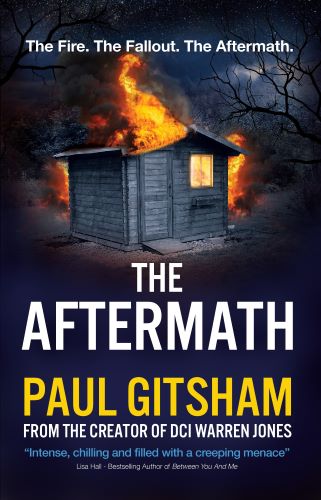What’s The Point
(Of View)?

First of all a reminder of the basics.
There are three commonly described points of view (POV). First, Second and Third person.
First Person: The reader is the narrator.
I did this.
I thought this.
I said that.
Second Person: The narrator is describing what the reader is doing.
You did this.
You thought this.
You said that.
Third Person: The narrator is ‘omnipotent’. They are describing what the character – or characters – are doing.
Kevin did this.
Claire thought this.
Sam said that.Based purely on my own personal experience of reading, third person is the most commonly used POV, followed by first person, with second person a very distant third. I mostly read crime and thriller, so it’s possible that first person is the most popular in other genres. I’m willing to be corrected, but I don’t think second person is especially popular in any genre.
So what should you consider when choosing your POV?
First of all, you can switch POV within a single story.
An example might be different chapters narrated in the first person by different characters. Another approach might be to tell the bulk of the story in third person, but have a specific character narrate particular sections in first person, or even pull the reader into the story and narrate that chapter in second person.
However, this comes with a big caveat – signpost these changes clearly, otherwise it can be confusing to readers. And subtly remind them periodically who’s POV you are writing from.
You could start a chapter, or section, with a title page telling the reader who the narrator is, but you have to remember that readers sometimes have to put a book down mid-way through a chapter and might not recall who the current narrator is when they return.
You can do this by having another character address the narrator by their name or you can have the narrator think or do something that only they would do.
For example, imagine a book told in alternating chapters by a mother and daughter.
“She’s been like this since I was a kid, always smothering me and treating me like I’m about to break.”
This shows you that the narrator is the daughter, without ever telling you directly.
“I wish she’d see that I just want to protect her, but she’s growing up so fast, I feel I’m losing her.”
This is clearly from the mother’s POV.
Pros and Cons of each POV.
Third Person:
This is the omnipotent point of view. You are an outsider narrating the actions of one or more of your characters. The reason this is so popular is its flexibility.
You can choose to narrate one character or multiple characters, even in the same scene. You can also tell the reader about things that none of the main characters know. For example two people in a restaurant talking, completely unaware of a third person eavesdropping.
You are also in control of how much you tell the reader. If there are three people in the room and one of them is guilty of killing someone, you can mask that from the reader by describing the scene as if you are a fourth person watching the other three interacting. You can choose how much or how little the reader ‘notices’, and easily time any revelations for dramatic effect.
You can also decide how closely you wish to follow a character. In my DCI Warren Jones novels, Warren is the main protagonist. Most chapters follow him and his thoughts, and I do so in the third person. I sometimes joke that it is as if he has a body-worn camera, and I am describing the footage. Occasionally I will switch to another character, either in the same scene – for example, we might see what another officer is thinking in a conversation with Warren – or I might make that character the star of their own chapter.
There are few cons when using this POV, which is why it is often the ‘default’ POV. However, that doesn’t necessarily mean it’s the best POV for your story.
First Person:
The advantage of this POV is its intimacy with the reader. By saying “I did this” and “I thought this”, you suck the reader right into the story. A lot of psychological thrillers are written, at least in part, in this POV because it can really make the reader feel they are living the story, empathising with the central character (often the victim).
The key thing, is that the reader only ever knows what the character knows. This is both a powerful story writing tool – you can surprise your reader alongside your character – and a hindrance; some stories work better if you are able to ‘zoom out’ and foreshadow what happens next.
Here is an example of the same scene told in first and third person. I’d say that neither is better than the other, but they tell the story in different ways.
First Person:
I walked around the corner, deep in thought. Which is why I didn’t notice the speeding car. A squeal of brakes, a bone-crushing impact, and that’s the last thing I remember.
Third Person:
Dan walked around the corner, deep in thought. The driver of the speeding car had just enough time to hit the brakes before he struck the tall man in the trench coat. He caught a brief glimpse of the man’s startled face before the windscreen shattered. The body briefly remained perched on the bonnet of the car, before finally being thrown clear as the vehicle ground to a halt.
It was as if the whole world held its breath, waiting in silence to see what would happen, before someone screamed and the noise and panic came crashing back in.
“Oh, Christ,” he thought. “Have I killed him?”
One of the strange things about this POV is the extreme reactions that it can provoke in certain readers. Some people really dislike it, to the point they will stop reading. I’ve never really understood why. When asked to explain their aversion, they rarely give an answer beyond ‘it’s just a gimmick’.
To be honest, I wouldn’t worry about it. The vocal minority that claim they won’t read anything in first person are probably about as significant in number as those who claim they never read a prologue. Ignore them. Even if you lose a couple of readers through an inexplicable prejudice, if your story works better in first person, then you will gain more readers through positive word of mouth.
Second Person:
This is really tricky to pull off, I don’t think I’ve ever seen it outside of choose-your-own-adventure novels. At least not for more than a brief section. Theoretically, it has many of the same advantages as first person, but it’s more restrictive. With first person, you can still withhold information from the reader in first person, as you are still narrating the story to the reader. With second person, the reader and the narrator are one and the same, so one would assume that in most cases you would know if you were the killer!
POV can be a hotly debated topic. What are your thoughts? Do you have any good examples where a writer has successfully written in second person for extended periods?
As always, feel free to comment here or on social media.
Best wishes,
Paul



















